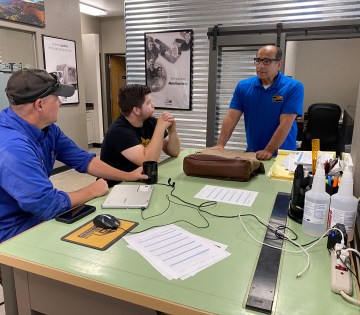Space is a precious thing and sometimes rare in many Grand Junction, CO, homes. That’s why some homeowners choose to create laundry areas in their basements. Of course, this comes with its fair share of challenges, the biggest headache being excess humidity and leaks. Both can foster mold growth and condensation. There’s also the risk of accidental fires due to dryer mishaps. How do you get past these obstacles and succeed with the move?
Some homeowners move their laundry without figuring out how they’re going to ventilate this space. Here’s what you should know. Poor ventilation reduces dryer performance and increases carbon monoxide levels in the basement. That’s not the outcome you want or direction you’d like to take.

How to Vent the Basement Dryer
Let’s say you have already installed the washing machine. You will need to set up the dryer vents correctly before the laundry area becomes operational. This will help you beat basement humidity. Proper installation will enhance operational efficiency and prevent risks such as fires and water damage.
- Find the shortest route that the duct can take from the dryer to the outside. While a straight line is desirable, it’s not always possible.
- Punch a 4¼-inch hole directly in your exterior wall if there’s no obstruction. You can also vent the basement dryer through a window.
- Position the dryer vent cap on your house wall, then hold it in place using screws before caulking its edges. Make sure the pipe fits the gap on the wall.
- Cut the duct pipe to length, then connect it to the outlet. If there are multiple sections, you will have to clamp the ducts and reinforce their joints.
Venting your Washing Machine
You will follow more or less the same steps to vent your dryer. Make sure the vent goes outside. You can vent the dryer through the window or direct it straight to the attic. Make sure the ducts have P-traps, which capture toxic fumes and prevent them from leaking. The upper part has to be raised higher above the machine’s overflow level. If you’re installing the vents on unfinished concrete walls or want to have a standpipe installed, talk to your local plumber.
Cleaning and Monitoring Vents
While proper venting enables moisture to exit your basement, it’s cleaning and monitoring that ensures their operational efficiency. Clean dryers are also safe. They will eject hot, steaming vapor out of the basement. However, the ducts can get clogged by lint down the line. When this happens, they won’t function to their full capacity. Moisture will start building up in the basement and lead to condensation and other problems.
You can stay on top of things by installing LintAlert, a handy device that monitors the air pressure in the ducts. This device will flash and beep to alert you of lint-related blockage. Be sure to check the pipes from time to time. Leaks can occur and hurt your basement. You can avoid this and other issues by signing up for annual basement service.
Clogged Vents
Whenever the vents or duct block, clothes will take longer to dry. The other sign is a burnt odor whenever you dry your linen. Lint buildup is the common culprit. And it can accumulate on the vent pipes or ducts for months or years. Such buildup will prevent airflow, and this means one thing—your clothes won’t dry as fast as you want. It’s also not uncommon for the dryer to short cycle and then shut down. Clogging can also increase utility costs during winter weather.
To avoid blockages, use a flexible aluminum duct with the recommended width. Make sure the pipe goes around bends. Keep the distance between pipes short. This way, the ducts won’t trap lint. Clean the ducts and outside screen from time to time so air keeps flowing.
If you need help waterproofing your basement or insulating it, get in touch with the experts at Foundation Repair of Western Colorado. We provide free basement waterproofing inspections and quotes. Our experts can help you resolve problems that are hurting your basement so you can have a clean, dry, mold-free interior.


